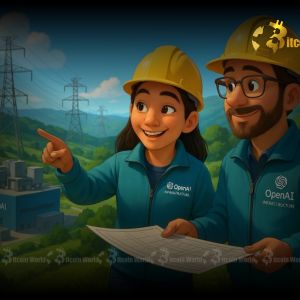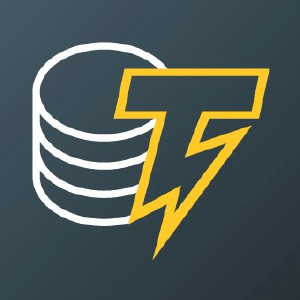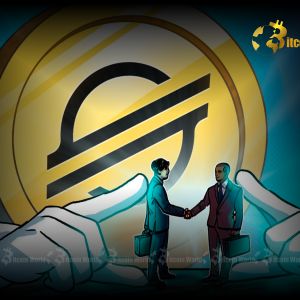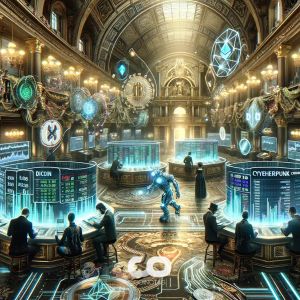BitcoinWorld OpenAI Engineer Unveils 5 Startling Truths About Its Explosive Culture In the fast-paced, high-stakes world of technology, where innovation can reshape industries overnight, understanding the internal dynamics of a company like OpenAI offers invaluable insights. For those deeply embedded in the cryptocurrency and blockchain space, the parallels are striking: rapid growth, groundbreaking technology, and an ever-present sense of urgency. This environment, while exhilarating, also presents unique challenges. What’s it truly like behind the curtain of one of the world’s most talked-about AI companies? A former OpenAI engineer has just pulled back that curtain, offering a fascinating glimpse into its hyper-growth culture. Calvin French-Owen, a seasoned engineer and co-founder of the successful customer data startup Segment (acquired by Twilio for $3.2 billion), recently shared his experiences after a year at OpenAI. His resignation wasn’t fueled by internal strife but by a desire to return to his entrepreneurial roots. This makes his observations particularly valuable, offering an unbiased perspective on a company that has redefined consumer technology. French-Owen worked on Codex, OpenAI’s advanced coding agent designed to compete with tools like Cursor and Anthropic’s Claude Code, giving him a front-row seat to some of its most ambitious projects. His candid blog post reveals aspects of OpenAI’s culture that might surprise many, while confirming others that align with its public image. What’s the Reality of OpenAI ‘s Hyper-Growth? The sheer speed of OpenAI’s expansion is astounding. French-Owen noted that the company swelled from 1,000 to 3,000 employees within his single year there. This 200% growth rate is virtually unheard of for a company of its size, reflecting the unprecedented demand for its products, particularly ChatGPT. Launched in late 2022, ChatGPT quickly became the fastest-growing consumer product in history, boasting over 500 million active users and continuing to climb rapidly. This meteoric rise creates immense pressure, driving the need for continuous, aggressive hiring to keep pace with user demand, product development, and fierce competition in the AI landscape. Such explosive growth, while a testament to OpenAI’s success, inevitably introduces significant organizational challenges. As French-Owen aptly put it, “Everything breaks when you scale that quickly.” This includes fundamental operational aspects: Communication structures: How information flows efficiently across rapidly expanding teams. Reporting hierarchies: Defining clear lines of authority and accountability. Product shipping processes: Streamlining development, testing, and deployment. People management and organization: Ensuring effective leadership and team cohesion. Hiring processes: Maintaining quality and speed in recruitment. The challenge lies in adapting traditional corporate structures to a startup’s pace, a feat few companies manage seamlessly. OpenAI’s rapid expansion is a case study in managing the growing pains of a company striving to meet insatiable global demand for its groundbreaking AI models. Is AI Culture Truly Chaotic? French-Owen’s observations paint a picture of an AI culture that, while empowering, is also characterized by a degree of internal chaos. On one hand, OpenAI strives to retain the agility of a small startup, where individuals are empowered to act on their ideas with minimal bureaucracy. This autonomy fosters innovation and allows for rapid iteration. However, the flip side of this freedom, especially within a rapidly expanding workforce, is duplication of effort. French-Owen cited seeing “half a dozen libraries for things like queue management or agent loops” as a prime example. This indicates a lack of centralized coordination or perhaps an intentional allowance for experimentation, even if it leads to redundancy. Furthermore, the technical landscape reflects this dynamic. The coding skill within the company varies widely, from seasoned Google engineers capable of building systems for billions of users to newly minted PhDs who, while brilliant researchers, may lack extensive production-level coding experience. This, combined with the flexible nature of Python, the primary language used, means that the central code repository – often referred to as the “back-end monolith” – can become “a bit of a dumping ground.” The consequences are tangible: code that frequently breaks or takes an excessive amount of time to run. The good news, according to French-Owen, is that top engineering managers are well aware of these issues and are actively working on improvements. This acknowledgment suggests a commitment to refining their operational infrastructure as they mature from a hyper-growth startup into a stable, leading AI powerhouse. The Tech Startup Spirit: How Does OpenAI Maintain It? Despite its massive scale, OpenAI appears to operate with the mindset of a much smaller tech startup . French-Owen noted that the company still runs “entirely on Slack,” a hallmark of nimble, communication-intensive startups. This internal culture feels reminiscent of Meta (then Facebook) in its early “move-fast-and-break-things” years, a philosophy that prioritizes rapid deployment and iteration over perfection. It’s perhaps no coincidence that OpenAI has recruited many of its talents from Meta, bringing that very spirit with them. The most compelling example of this “launching spirit” is the development of Codex. French-Owen recounted how his senior team – comprising around eight engineers, four researchers, two designers, two go-to-market staff, and a product manager – built and launched Codex in a mere seven weeks, from inception to deployment. This intense sprint often involved “almost no sleep,” highlighting the dedication and pressure within the teams. The payoff, however, was immense. “Launching it was magic,” he wrote. The product gained immediate traction simply by being integrated into ChatGPT’s left-hand sidebar. “I’ve never seen a product get so much immediate uptick just from appearing in a left-hand sidebar, but that’s the power of ChatGPT.” This illustrates the incredible advantage of having a widely adopted platform that can instantly deliver new features to hundreds of millions of users, driving unparalleled product adoption and reinforcing the company’s aggressive, launch-focused strategy. Navigating the ‘Secretive Fishbowl’: What About AI Safety ? As a company at the forefront of a transformative technology, ChatGPT and OpenAI are under constant, intense scrutiny. This “secretive fishbowl” environment has naturally led to a culture of internal secrecy, primarily to prevent leaks to the public. Every move, every new development, is watched by governments, competitors, and the public alike. Interestingly, French-Owen observed that the company is highly attuned to public sentiment, particularly on platforms like X (formerly Twitter). If a post goes viral there, OpenAI takes notice and may even respond, leading to the joke among employees that the company “runs on Twitter vibes.” This demonstrates a fascinating interplay between internal operations and external public perception. Perhaps the biggest misconception French-Owen addressed relates to AI safety. Many AI safety advocates, including former OpenAI employees, have voiced concerns about the company’s processes and commitment to safety. While external “doomsayers” might focus on theoretical, existential risks to humanity, French-Owen clarified that internally, the focus is much more on practical safety concerns. These include critical issues like “hate speech, abuse, manipulating political biases, crafting bio-weapons, self-harm, and prompt injection.” This pragmatic approach ensures that immediate, tangible risks associated with current LLM deployment are prioritized. He emphasized that OpenAI is not ignoring the long-term potential impacts; dedicated researchers are indeed exploring these complex issues. With hundreds of millions of people using its LLMs for everything from medical advice to therapy, the stakes are undeniably high, and the company is acutely aware of its immense responsibility. Key Engineer Insights : What Can We Learn? Calvin French-Owen’s candid account provides invaluable engineer insights for anyone working in or aspiring to join a high-growth tech environment. His observations highlight several critical takeaways: Embrace the Chaos: Rapid scaling inherently brings disorganization. Learning to navigate and even thrive within this chaos, while pushing for improvements, is crucial. Impact Over Perfection: The “launching spirit” demonstrates that getting a product to users quickly, even if it’s not perfectly polished, can lead to unprecedented adoption and feedback. This is a trade-off many fast-growing companies make. Diverse Skill Sets: A mix of seasoned veterans and brilliant newcomers can create both challenges (like code consistency) and opportunities for unique problem-solving. Effective management lies in harnessing these diverse strengths. Balancing Autonomy and Structure: Empowering teams fosters innovation, but without some centralized guidance, it can lead to duplicated efforts. Finding the right balance is an ongoing challenge for scaling organizations. Safety is Paramount: For AI companies, practical safety considerations are a daily reality, not just theoretical discussions. Understanding and contributing to these efforts is a key responsibility for all employees. His story underscores that working at the cutting edge of AI, particularly at a company like OpenAI, is an experience defined by immense pressure, exhilarating breakthroughs, and a constant evolution of internal processes. It’s a testament to the dedication required to build the future of artificial intelligence. In conclusion, Calvin French-Owen’s reflections offer a rare and authentic look inside one of the most impactful companies of our time. OpenAI is a fascinating paradox: a giant company that still behaves like a nimble startup, grappling with the complexities of hyper-growth while maintaining an intense focus on both innovation and practical safety. His insights remind us that behind the groundbreaking technology are dedicated individuals navigating a dynamic, often chaotic, but undeniably transformative environment. It’s a compelling narrative for anyone interested in the future of technology, revealing that the human element remains central to even the most advanced AI endeavors. To learn more about the latest AI culture trends, explore our article on key developments shaping AI models’ features and institutional adoption. This post OpenAI Engineer Unveils 5 Startling Truths About Its Explosive Culture first appeared on BitcoinWorld and is written by Editorial Team
















